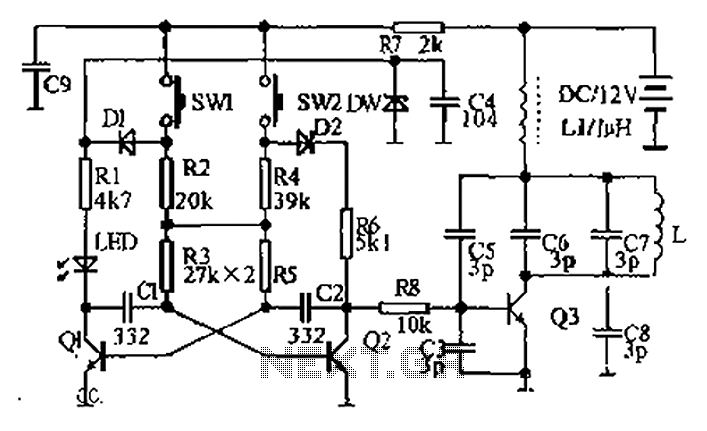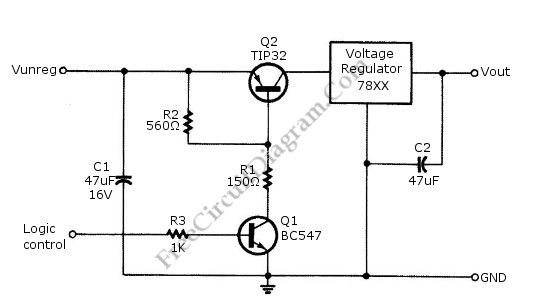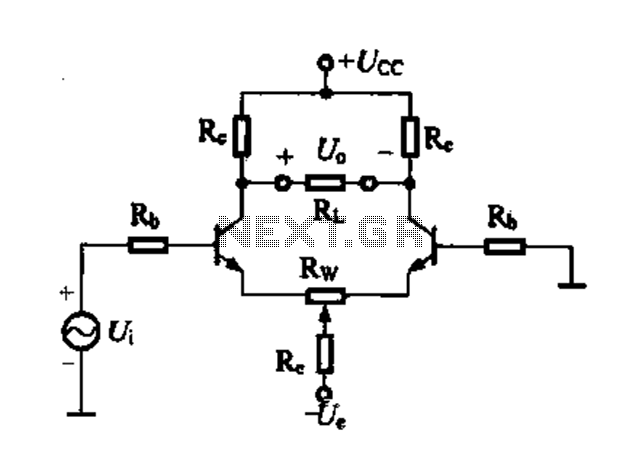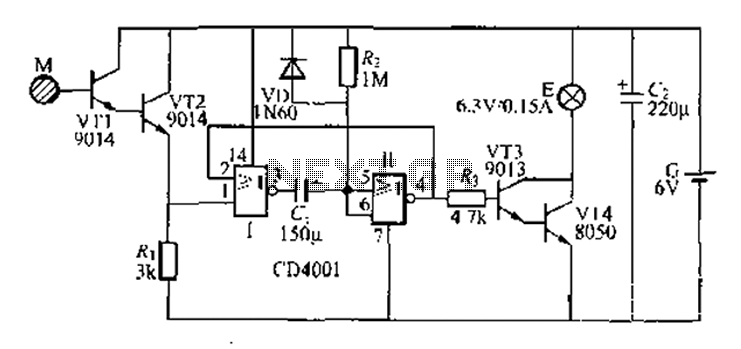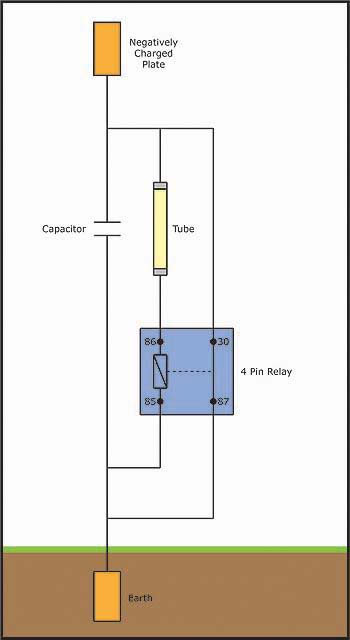
Offset-Adjusting Current Source Circuit
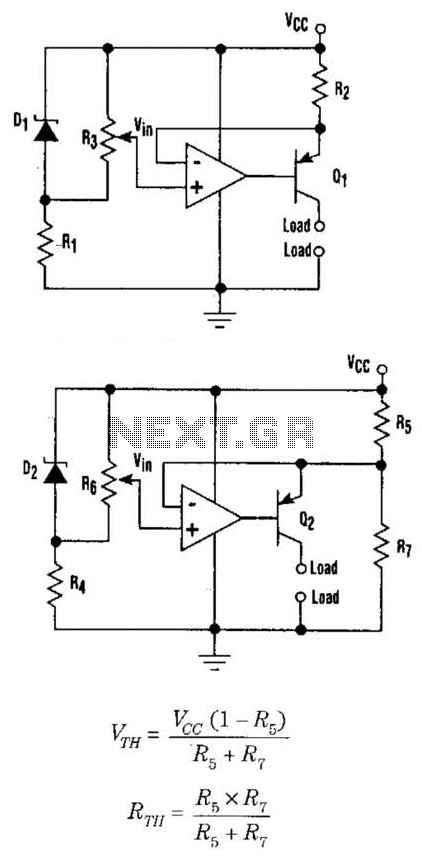
This setup can function as a cost-effective current source with an output accuracy of 1%. However, the voltage offset can activate the current source even when Vqq equals Vin. Modifying the configuration of Figure 1 can resolve the issue of the current source being inadvertently activated by the voltage offset. The addition of resistor R7 allows for an adjustment that ensures the current source turns off for any op-amp offset specification. By carefully selecting components, a cost-effective circuit for a current source with a 1% output accuracy can be created (refer to Fig. A). The current flowing from the collector of Q1 (denoted as 70UT) is calculated as Vcc divided by the resistance value of R2. In certain scenarios, being able to deactivate the current source is crucial (within the limits of Icm for Q1). Unfortunately, in about half of these cases, the offset voltage (l70S) of the op-amp will activate the current source even when Vcc equals Vm. This occurs because the offset voltage, which requires the non-inverting input to be at a higher potential than the inverting input to result in a 0 V output from the op-amp, is applied across R2. This offset voltage causes Q1 to turn on sufficiently to produce a collector current of V()S divided by R2. The diagram provides a solution to this issue. The addition of R7 supplies the emitter of Q2 with a Thevenin equivalent voltage and resistance, represented by the difference between Vcc and VTH as Vcc + R7. If Vcc (#5/fl5 + R7) is set equal to the maximum Vos specification for the op-amp in question, the circuit can be guaranteed to turn off. The output current of this circuit is determined by the equation VTH - VSN divided by RTI. However, the configuration does introduce another error term in the circuit. The term (Vm - ISJN) must be 2 Vos to ensure a current output for the entire population of the selected op-amp. This error can be minimized (though not eliminated) by increasing the voltage of D2 and Vcc while also raising the value of the equivalent resistance Rth.
This circuit design emphasizes the importance of managing offset voltages in operational amplifiers to prevent unintended activation of the current source. The primary components involved include the operational amplifier, resistors R2, R7, and others, which are strategically chosen to ensure the desired output characteristics. The inclusion of R7 is critical, as it allows the circuit to maintain functionality across various op-amp specifications by providing a means to counteract the offset voltage that can lead to erroneous current output.
The output current, represented as 70UT, is derived from the relationship between the voltage at the wiper of R3 and the value of R2. This relationship is essential for maintaining the accuracy of the current source, particularly in applications where precise current control is necessary. The circuit's design must account for the maximum offset voltage (Vos) of the op-amp, ensuring that the turn-off condition is met under all specified operating conditions.
Furthermore, the introduction of the Thevenin equivalent voltage and resistance through R7 aids in stabilizing the circuit's performance. By setting Vcc appropriately in relation to R7, it is possible to ensure that the current source remains off when it is not intended to be active. This careful balancing of voltages and resistances is crucial in achieving a reliable and accurate current source.
Overall, the described circuit provides a robust solution for creating a cost-effective current source with a high degree of accuracy, while also addressing the challenges posed by operational amplifier offset voltages. The design principles outlined here can be applied to various electronic applications where precise current sourcing is required, making it a valuable addition to the toolkit of electronic circuit designers. Though this setup can act as a cost-effective current source with an output accurate to 1%, the voltage offset will turn on the current source even when Vqq equals Vin. 2. Modifying the configuration of Figure 1 can rectify the problem of the current source being turned on by the voltage offset.
The addition of R7 allows an adjustment that guarantees turn-off for any op-amp offset specification. By carefully choosing components, you can create a cost effective circuit for a current source with an output that`s accurate to 1% (Fig.
A). 70UT (the current flowing from the collector of Ql) is ^cc^`in (^e voltage at the wiper of R3) divided by the value of R2. In some instances, it`s important to be able to turn off the current source (within the limits of Icm for Ql).
Unfortunately, in about half ofthese cases, the offset voltage (l70S) of the op amp will turn the current source on even when Vcc = Vm. That`s because the offset voltage (when the noninverting input needs to be at a higher potential than the inverting input to get an output of 0 V from the op amp) is impressed across R2.
This offset voltage forces Ql to turn on enough to yield a collector current of V()S divided by R2. Diagram offers a fix for this predicament. The addition of R7 presents the emitter of Q2 with a Thevenin equivalent voltage and resistance represented by: The difference between Vcc and VTH is Vcc + R7). If Vcc (#5/fl5 + R7) is set equal to the maximum Vos spec for the op amp in question, the circuit is then guaranteed to turn off.
This circuit has an output current of VTH - VSN divided by RTI}. The compromise of Fig. does present another error term in the circuit. The term (Vm - ISJN) will have to be 2 Vos to guarantee a current output for whole population of the op amp chosen. This error can be made arbitrarily small (but not zero) by increasing the voltage of D2 and Vcc while raising the value of D2 and Vcc while also raising the value of the equivalent resistance Rth.
🔗 External reference
This circuit design emphasizes the importance of managing offset voltages in operational amplifiers to prevent unintended activation of the current source. The primary components involved include the operational amplifier, resistors R2, R7, and others, which are strategically chosen to ensure the desired output characteristics. The inclusion of R7 is critical, as it allows the circuit to maintain functionality across various op-amp specifications by providing a means to counteract the offset voltage that can lead to erroneous current output.
The output current, represented as 70UT, is derived from the relationship between the voltage at the wiper of R3 and the value of R2. This relationship is essential for maintaining the accuracy of the current source, particularly in applications where precise current control is necessary. The circuit's design must account for the maximum offset voltage (Vos) of the op-amp, ensuring that the turn-off condition is met under all specified operating conditions.
Furthermore, the introduction of the Thevenin equivalent voltage and resistance through R7 aids in stabilizing the circuit's performance. By setting Vcc appropriately in relation to R7, it is possible to ensure that the current source remains off when it is not intended to be active. This careful balancing of voltages and resistances is crucial in achieving a reliable and accurate current source.
Overall, the described circuit provides a robust solution for creating a cost-effective current source with a high degree of accuracy, while also addressing the challenges posed by operational amplifier offset voltages. The design principles outlined here can be applied to various electronic applications where precise current sourcing is required, making it a valuable addition to the toolkit of electronic circuit designers. Though this setup can act as a cost-effective current source with an output accurate to 1%, the voltage offset will turn on the current source even when Vqq equals Vin. 2. Modifying the configuration of Figure 1 can rectify the problem of the current source being turned on by the voltage offset.
The addition of R7 allows an adjustment that guarantees turn-off for any op-amp offset specification. By carefully choosing components, you can create a cost effective circuit for a current source with an output that`s accurate to 1% (Fig.
A). 70UT (the current flowing from the collector of Ql) is ^cc^`in (^e voltage at the wiper of R3) divided by the value of R2. In some instances, it`s important to be able to turn off the current source (within the limits of Icm for Ql).
Unfortunately, in about half ofthese cases, the offset voltage (l70S) of the op amp will turn the current source on even when Vcc = Vm. That`s because the offset voltage (when the noninverting input needs to be at a higher potential than the inverting input to get an output of 0 V from the op amp) is impressed across R2.
This offset voltage forces Ql to turn on enough to yield a collector current of V()S divided by R2. Diagram offers a fix for this predicament. The addition of R7 presents the emitter of Q2 with a Thevenin equivalent voltage and resistance represented by: The difference between Vcc and VTH is Vcc + R7). If Vcc (#5/fl5 + R7) is set equal to the maximum Vos spec for the op amp in question, the circuit is then guaranteed to turn off.
This circuit has an output current of VTH - VSN divided by RTI}. The compromise of Fig. does present another error term in the circuit. The term (Vm - ISJN) will have to be 2 Vos to guarantee a current output for whole population of the op amp chosen. This error can be made arbitrarily small (but not zero) by increasing the voltage of D2 and Vcc while raising the value of D2 and Vcc while also raising the value of the equivalent resistance Rth.
🔗 External reference
Warning: include(partials/cookie-banner.php): Failed to open stream: Permission denied in /var/www/html/nextgr/view-circuit.php on line 713
Warning: include(): Failed opening 'partials/cookie-banner.php' for inclusion (include_path='.:/usr/share/php') in /var/www/html/nextgr/view-circuit.php on line 713
